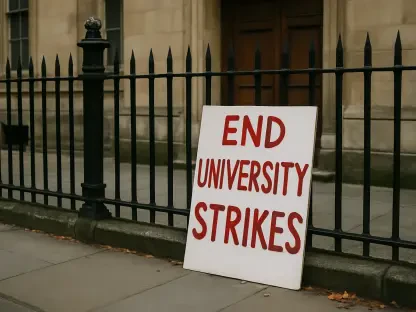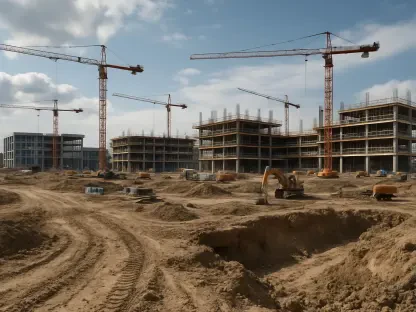Whitman College is currently grappling with a major financial issue, confronting a $3 million shortfall in its budget, leading to significant staff reductions and salary cuts. The college has made the difficult decision to eliminate ten staff positions while imposing salary reductions for employees who earn more than $70,000 annually, including cabinet members and the college president. These measures have sparked debate among community stakeholders, drawing attention to the unceremonious manner in which long-standing employees were notified of their termination. This fiscal turbulence has raised questions regarding the college’s strategic decisions, especially in light of declining enrollment figures and ongoing investments in new student housing projects.
Realignment of Fiscal Strategy
Specific Measures Implemented
In the face of this financial crisis, Whitman College has taken assertive steps to address the growing budget deficit through targeted spending reductions. As part of this strategy, the college is leveraging cuts to personnel costs by implementing layoffs and salary adjustments among its higher-earning employees. Staff earning $70,000 or above will undergo a 1% salary reduction, while cabinet members, central to the college’s decision-making, will experience a 2% cut. Perhaps most notably, Whitman’s President, Sarah Bolton, will witness a 10% decrease in her compensation, potentially lowering her earnings below $500,000 annually.
Despite these decisive actions aimed at reducing expenditures, the college’s overall savings are projected to cover only approximately $1 million of the $3 million deficit. Whitman depends on its reserve revenue, additional maintenance spending cutbacks, and the shelving of particular projects to bridge the remaining gap. However, this comprehensive financial approach places considerable emphasis on the well-being of affected staff members, who have contributed significantly to Whitman’s operational success over the years.
Concerns About Impact and Tactics
The institution’s handling of staff layoffs has ignited criticism due to its seemingly impersonal and abrupt nature. Long-serving employees, such as Noah Leavitt, who devoted two decades to Whitman College, were unexpectedly informed of their termination. Such abrupt actions have led many in the community to question the college’s commitment to humane and respectful treatment of its workforce during challenging times. The lack of clarity surrounding the specifics of the eliminated positions has added to community apprehension, raising concern about how these cuts might impact daily operations and the student experience at Whitman.
Furthermore, stakeholders have expressed confusion over the college’s strategic decision to invest in constructing new residential housing aimed at accommodating over two hundred students, despite facing declining enrollment numbers. This move has left many questioning the prudence of allocating already strained resources to new projects, rather than reinforcing existing structures or services critical to the institution’s academic mission. Whitman’s leadership is urged to consider both current and long-term enrollment trends in its financial planning to ensure continued stability and success.
Navigating Institutional Changes
Balancing Expenditure with Responsibility
As Whitman College faces these financial challenges, it is essential for its leadership to find equilibrium between necessary budgetary cuts and responsible stewardship of its resources. Such a balance demands a comprehensive understanding of the institution’s immediate needs and long-term sustainability goals. By prioritizing transparency and effective communication, Whitman can rebuild trust with its community, ensuring that financial strategies align with both immediate economic necessities and the college’s broader educational mission.
A critical element in this process involves addressing potential disruptions in institutional operations due to staffing changes. The college must scrutinize the effects of its reduced workforce on the quality of education, student services, and administrative efficiency. Navigating these adjustments with informed decision-making, sensitive to the contributions and career trajectories of affected staff, is paramount. This approach not only maintains morale among current employees but also upholds Whitman’s reputation for academic excellence and ethical governance.
Prospects for Future Stabilization
The college community has actively called for compassionate measures to accompany necessary fiscal corrections, advocating for solutions that prioritize human capital. Looking ahead, Whitman’s leadership is tasked with harnessing collaborative efforts from faculty, staff, and external advisors to devise strategic plans that reconcile budget realities with the institution’s unwavering commitment to education. By adopting a multidimensional approach, focusing on enrollment strategies, cost-effectiveness, and innovative revenue-generating initiatives, Whitman can position itself for future financial stabilization.
While grappling with present challenges, Whitman College also has the opportunity to re-evaluate its organizational structures and harness new avenues for growth. This period of reassessment can serve as a catalyst for positive transformation, inspiring advances in curriculum development, technological integration, and community partnerships. Such innovations, propelled by a collective commitment to resilience and improvement, can bolster Whitman’s standing and reinforce its dedication to delivering a premier educational experience.
Charting a Path Forward
Whitman College faces a significant financial crisis, dealing with a $3 million budget gap that has led to substantial staff layoffs and salary cuts. The institution has decided to terminate ten staff positions and reduce salaries for employees earning over $70,000 a year, affecting cabinet members including the college president. These tough choices have ignited debate among community members, who are concerned about how long-term employees were abruptly notified of their dismissal. Questions have surfaced about the college’s strategic planning, especially given the drop in enrollment and the continued spending on new student housing developments. Critics are questioning the prioritization of such investments when financial stability is uncertain. This situation calls for a reevaluation of the college’s approach to managing its resources and ensuring it can adapt to the changing educational landscape while maintaining both fiscal health and its commitment to quality education.









